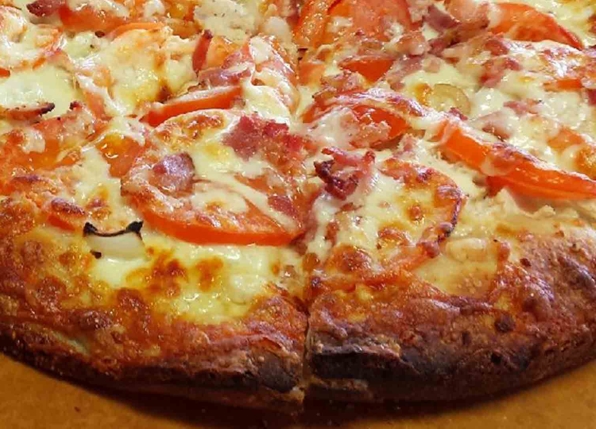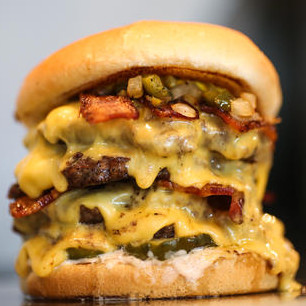There’s a push on, at several levels of government, to make it mandatory for restaurants to post Calorie counts for all their menu items. The idea is, diners can make educated decisions about reducing their Calorie intake. Many were skeptical, but it appears the ploy is working…
 A Pizza with all the toppings may be one of the highest-Cal meals you can eat.
A Pizza with all the toppings may be one of the highest-Cal meals you can eat.
But it’s nutrient rich and balanced. One slice once a week is quite enough!
First, there was a requirement under the U.S. Affordable Care Act of 2010 (still in effect in spite of Trump’s attempts to repeal it) that all restaurant organizations with more than 20 locations in their chains must post Calorie counts for all their menu items. Since then, a number of states have gotten on the bandwagon, proposing or passing new laws that all restaurants in their jurisdictions post Calorie counts.
The idea is to make diners more aware of the relative healthfulness of their dining-out choices and, hopefully, lead them top healthier choices. The long-term goal is make populations healthier and lower the burden on the health care system. A new study suggests that posting Calorie counts is at least partly successful…
What they did…
Researchers from Cornell University conducted a randomized field experiment in two full-service restaurants. Each party of diners was randomly assigned to either a control group, which received the usual menus, or a treatment group, which got the same menus but with calorie counts next to each item. At the end of the meal, each diner was asked to complete a survey that collected sociodemographic information and attitudes toward diet and exercise. In all, the researchers gathered data from 5,550 diners.
What they found…
Diners at full service restaurants whose menus listed calories ordered meals with 3 percent fewer calories — about 45 calories less — than those who had menus without calorie information. Customers ordered fewer calories in their appetizer and entree courses, but their dessert and drink orders remained the same.
Restaurant revenues, profits and labor costs were unchanged.
In post-meal questionnaires, majorities of both the treatment and control groups supported having calorie labels on menus, and exposure to the calorie count posting increased support by nearly 10 percent.
“It’s clear that people value this information,” said Study Co-author John Cawley, Professor of Policy Analysis and Management in the Cornell College of Human Ecology. “It’s a cheap policy to put in place, and the fact that there is a reduction in calories ordered makes it appealing.”
My take…
I, for one, check the calorie counts when I’m dining out and they are posted. And I’m often surprised by what I discover. Dishes I thought were low-Cal and dietarily ‘responsible’ sometimes turn out to be hi-Cal and, well, shameful. But I usually do the responsible thing and order lo-Cal. Except when I’ve gone out of my way to dine at a joint whose hi-Cal signature dish is the reason I came. And I don’t do that very often…
~ Maggie J.

